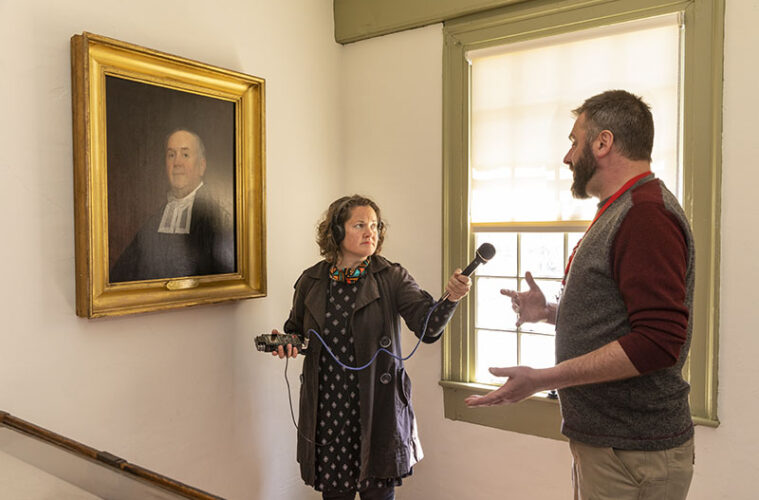There’s a small white building located just a few steps from the Peabody Essex Museum entrance that’s very easy to overlook. It’s tiny—the size of a garden shed—and looks wholly unremarkable from the outside, especially when surrounded by flashier historic buildings.
It’s a building you might ignore, were it not for a blue sign next to it that reads
“PEM Walks
Lye-Tapley Shoe Shop
What’s the story behind this spot?
Scan the code below to learn more.”
Salem is brimming with history in nearly every brick and cobblestone. There’s so much, in fact, that it’s easy just to walk by a historic building without even looking twice at it or understanding its importance.
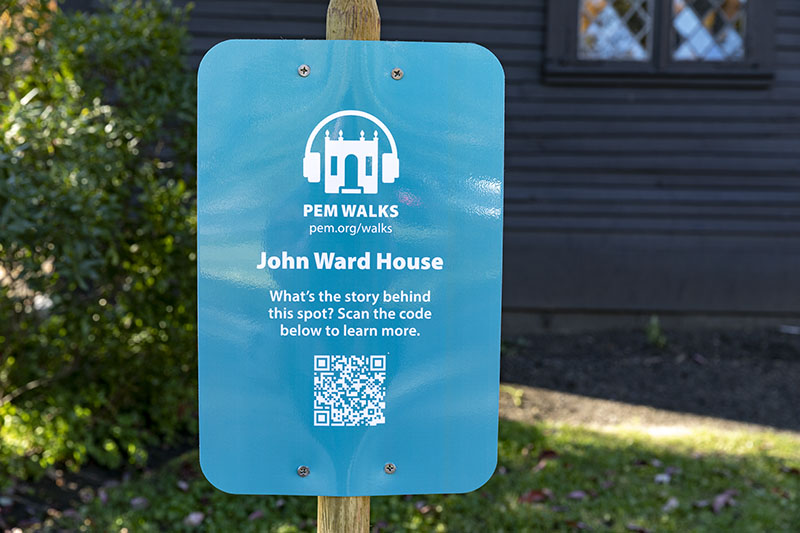
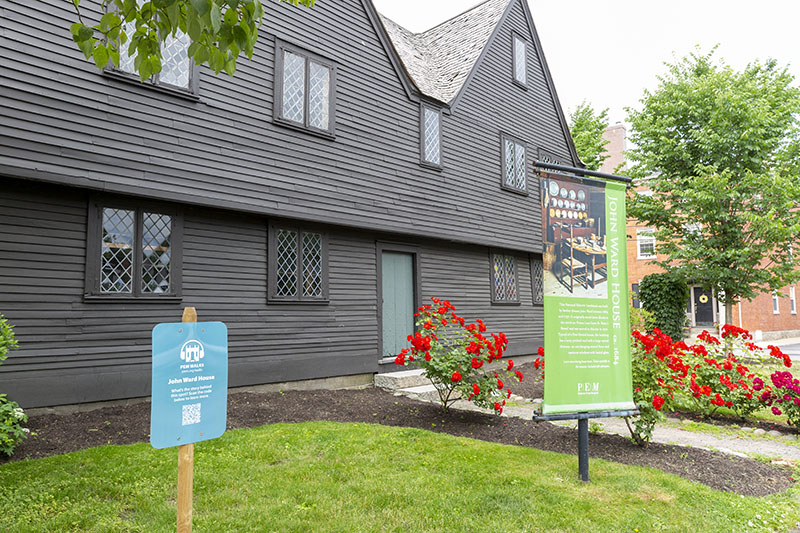
Now, the Peabody Essex Museum is shining a light on some of these overlooked gems with PEM Walks, a series of free audio tours that tell the stories of the buildings in its architectural collection. They’re available on smartphones and can be accessed via QR codes on the PEM Walks signs.
These relaxed and fun “audio postcards” feature Dinah Cardin, the museum’s content producer, and Steven Mallory, manager of historic structures and landscapes.
The PEM Walks audio tour about the Lye-Tapley Shoe Shop, for example, explains the history of this seemingly unimportant structure. It’s an 18th-century workshop where cobblers made shoes. Shoemaking was a huge industry on the North Shore, and until factories and machines industrialized the process, cobblers made shoes by hand. This particular building originally stood in Lynn before it was bequeathed to the museum in 1911 and moved to its current location.
“It’s a classic example of what was known as a ‘10-footer,’ that’s unique to the North Shore,” says Mallory.
PEM Walks, which recently won a gold MUSE Award, launched in the spring of 2021 when the pandemic was still raging and people were wary of large, indoor gatherings.
“Everyone was looking for something to do,” Cardin says, and PEM Walks offered a great solution. “You could go educate yourself on our houses without having to be in a big group, without having to go inside.”
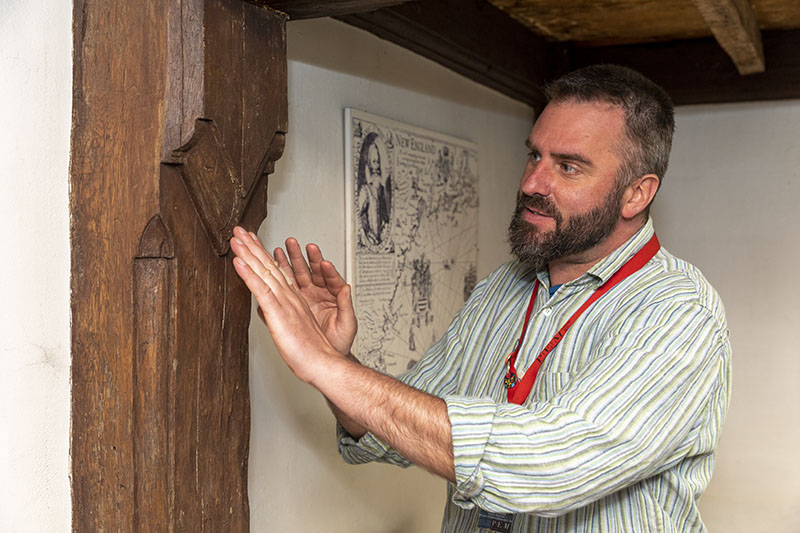
The audio tours might be educational, but they certainly aren’t lectures filled with dry facts. They’re fun, lighthearted, and often funny, with ambient sound like birdsong, music, and banter between Cardin and Mallory.
“We did it deliberately in an interview-like format to make it really approachable,” Cardin says. In fact, sometimes it feels like you’re exploring Salem right along with them. “I think at one point we even got locked out of a building. We laugh about it.”
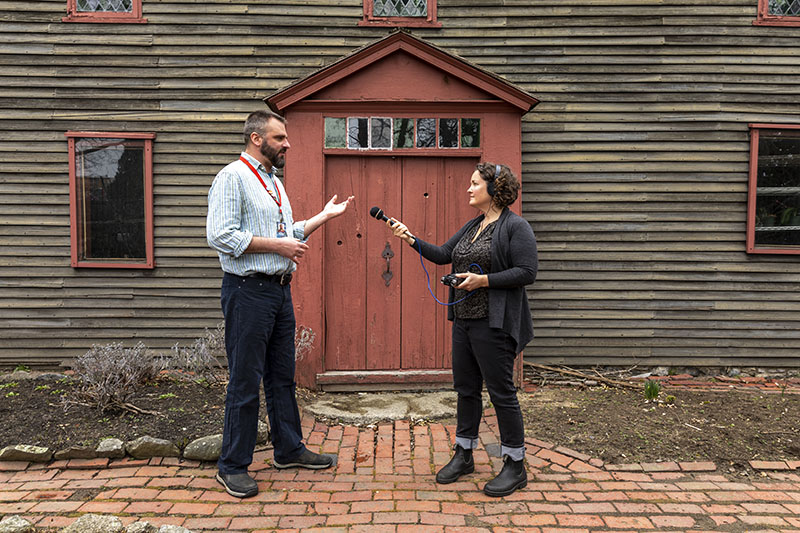
Since launching two years ago with just a handful of buildings, PEM Walks has expanded to include audio tours of more than a dozen of its historic properties, including the Ropes Mansion, the Crowninshield-Bentley House, and the Quaker Meeting House. The spotlight is fitting, since PEM’s collection of historic properties is special.
“PEM has the largest architectural collection of any art museum in the country,” Mallory says. “It’s unusual for an art museum to have a pretty significant architectural collection.”
The historical property collection provides a snapshot of Salem’s history and several centuries’ worth of American architecture.
“Our architecture spans almost all stylistic historic periods, from the 17th century all the way up to Greek Revival,” Mallory says. “Historic houses have been a part of the museum’s culture for over 100 years. The Quaker Meeting House was rescued and moved to its current location in 1860. It is one of the first historic preservation initiatives in America.”
Even as life continues to return to normal since the start of the pandemic, access to the museum’s historic houses has been drastically cut. With PEM Walks, the museum is accomplishing many things at once. It’s sharing the stories of these properties, even when the buildings themselves aren’t open to visitors. But it’s doing so in a way that’s newly accessible, which is very important to the museum. The PEM Walks audio tours (as well as the museum’s podcast, PEMcast) are free, so even those without the financial means to visit the museum can spend an entire afternoon strolling through the city, enjoying its collection, and hearing about places that are sometimes hidden in plain sight.
“We’re telling the story about our historic architecture collection, and we really want that tour to be accessible,” Cardin says.
Walking Tour
On April 29 join The Institute of Classical Architecture and Art New England Chapter and PEM Walks for a Salem Tour 11 a.m. to 12:30 p.m. For more information, visit the classicist-ne.org

